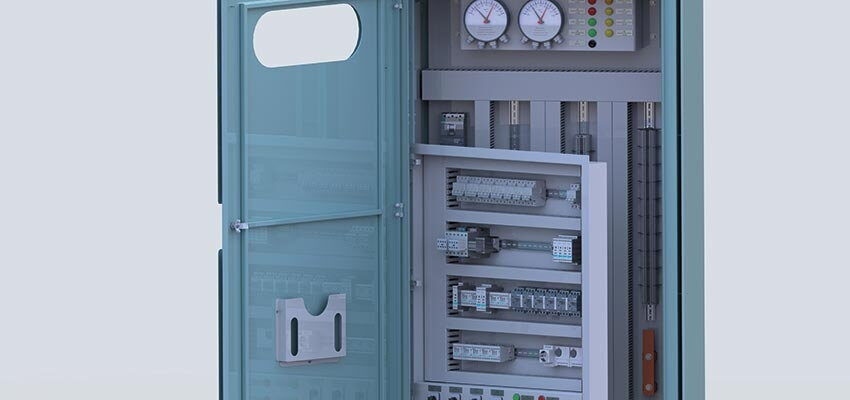
Transformer cabinets
Introduction Modern power transformers are equipped with numerous components, control, protection and monitoring sensors, systems and devices, etc. Signals for the control, protection and surveillance...
byHELB

Introduction
Modern power transformers are equipped with numerous components, control, protection and monitoring sensors, systems and devices, etc. Signals for the control, protection and surveillance of transformer operation, as well as those used to assess transformer conditions are sent to different substation systems and specialized utility departments. Some of these devices are passive, not needing any power supply, but most of them do need power supply. While many types of devices are used to provide some signals to other devices or systems installed on a transformer or in the substation, in the essence of modern, so-called smart devices and systems is communication with other systems.
Components such as on-load tap-changers require their own drive mechanism with measuring, control and monitoring functions.
It is therefore important to ensure that energizing of all the devices and systems installed on the transformer, collecting their signals and providing means for communication are performed systematically. Cabinets installed on the transformer (transformer cabinets) provide a place for all the cables used for these purposes to converge at one location.
Technology development enables implementation of advanced functions for transformer operation and life management. This not only increases the complexity of these systems and devices, but also makes it more complex to integrate them in a transformer. This puts a lot of pressure on transformer manufacturers who are increasingly required to deal with a whole variety of smart systems, cabling issues, information and communication technologies, etc. Additionally, it requires skills and resources which go beyond designing and manufacturing transformers. Our support enables them to remain focused on the development of their core strengths and business. Requirements are getting tighter not only for transformer operation and life management functions, but also for the transformer itself, which nowadays needs to boast features such as longer lifetime, lower losses, lower noise, higher reliability, less maintenance, etc. In order to respond to these challenges, transformer manufacturers are also required to put their focus and resources towards improving their design and manufacturing processes. Helping them to free the resources occupied by components integration is one of the ways in which we can support them.







